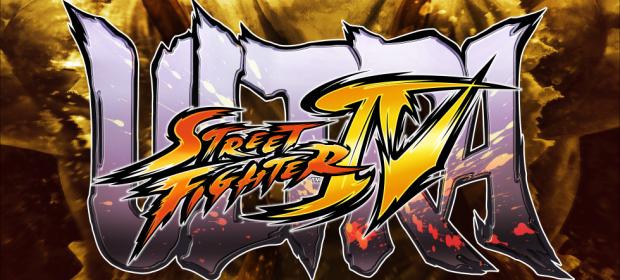Has it really been five years? Five years of focus dash cancels. Of debating the Ultra mechanic. Of whinging about Vanilla Sagat. Of jaws agape when Daigo played Yun instead of Ryu for that little bit. Of Shoto clone after Shoto clone. Of Poongko’s crazy unpredictable Seth. The past five years have been incredible for the fighting genre as a whole, but Street Fighter IV is the king.
Now please, if you have a personal favourite then I totally get that and I’d love to hear about it in the comments, but it’s impossible to ignore Street Fighter IV’s quality and impact on the genre. Street Fighter IV’s combos may not be as long and flashy as Marvel/Persona/BlazBlue, but they’re refined tests of execution nonetheless. It might not have the gore of Mortal Kombat but, let’s be honest, no Street Fighter IV would have meant no Mortal Kombat 9…
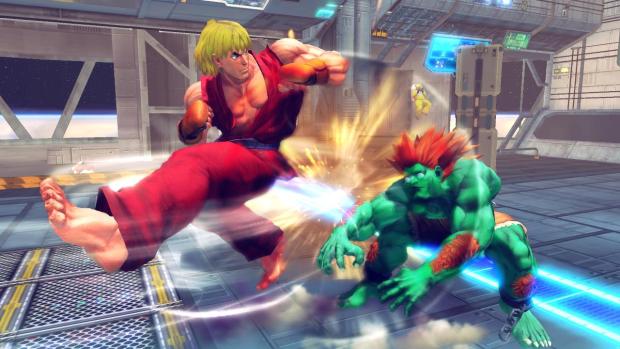
Street Fighter is the conduit around which fighting game popularity appears to wax and wane. Its systems are designed to be tight and compelling, easy to understand but hard to fit together. Its roster is tooled to appeal to solid archetypes rather than wacky concepts. It’s the fighting game for everyone and while some would argue that Street Fighter III is the better, or perhaps “deeper”, game, Street Fighter IV forwent the nigh impossible mastery mountain that is the parry, for what, at launch, was largely an HD facelift of Street Fighter II.
Over the years Street Fighter IV has grown, but has remained largely unshaken at a fundamental level. For every new face that would appear, the concrete upon which Street Fighter IV stood would remain still. The game stayed underpinned by Ultra Attacks and Focus Attacks, with only the fighters that used them changing. It meant that the game, balance tweaks aside, remained a familiar constant – which is excellent given the quality of the game, but this also led to fatigue setting in for a lot of people. No matter how many evil Shoto characters Capcom added over the years.
Well, that changes with Ultra Street Fighter IV, because now they’ve added evil Cammy! I jest, of course. Evil Cammy (Or Decapre, as she’s actually called), is a unique, zippy, mix-up-centric addition to the cast, and one of the five new faces of the Street Fighter IV roster (the others being Street Fighter III’s Hugo and Elena, Street Fighter Alpha 2’s Rolento and Street Fighter X Tekken’s Poison), bringing the total up to 44, a ridiculous number for a one-on-one fighting game. And while they are all solid additions (and all more interesting additions than, say, Evil Ryu), they’re probably the least interesting “new” things when we’re talking about the grand vision of Ultra Street Fighter IV.

Before I go into this, because things are about to get jargon-filled, please know that Ultra Street Fighter IV is a superb fighting game. It’s a logical re-shaping of the Street Fighter IV design, and if you enjoy Street fighter IV quite a bit then you can take confidence in knowing that Ultra Street Fighter IV is more of what you love, with interesting new mechanics to consider and master.
The key new elements in Ultra Street Fighter IV, aside from the grand character balance (which many spreadsheets around the net will explain for you), are Red Focus, Delayed Wake-up, and Ultra Combo Double.
First up: Red Focus. The focus attack in older versions of Street Fighter IV would let you soak up one attack and then launch a counter blow to try and surprise a predictable opponent, as long as they didn’t use an attack with armour-breaking properties. The mechanic has always been “ok”, but has never offered the real “predict and punish” oomph of, say, Street Fighter III’s parry. Red focus is an attempt to bulk up this mechanic. It’s essentially a way to spend two chunks of your super meter to absorb as many attacks as you want and then return fire.
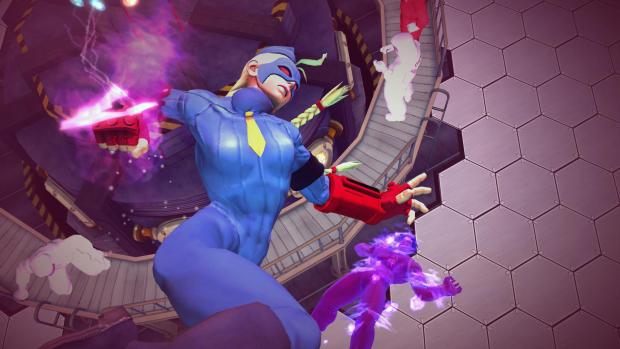
The mechanic’s capabilities come to light when you realise that the Red Focus has the ability to essentially counter Super and Ultra attacks. In previous versions of Street Fighter IV, if you couldn’t dodge a Super then you had to accept that you were going to be the victim of some nasty chip damage. Now, in Ultra Street Fighter IV, if you see the opponent try for an “out of the blue” Super, or even Ultra, you can initiate a Red Focus Attack and throw the damage back in their face.
Red Focus is not merely a way to mitigate damage; it’s a full blown counter, meaning that you’re able to turn what (in Street Fighter IV) would have been a small amount of unavoidable damage to you, into a huge chunk of pain for a foolish opponent. It’s not invincible, however, as it can still be broken by armour-breaking attacks, which includes things like special attacks and specifics such as the very first blow of Ken’s Ultra II. But when it works it’s supremely satisfying, and the mechanic ultimately adds a nice new notch to both Street Fighter IV’s meter game, and its defensive options.
In terms of aggressive options, the Ultra Double takes care of business. The Ultra was originally referred to as the Revenge attack, as it’s a super-powered move you can perform if you’re running out of health. Super Street Fighter IV added a second Ultra for all the characters for you to choose between. Ultra Street Fighter IV lets you have access to both in the same fight, for a reduction in damage.
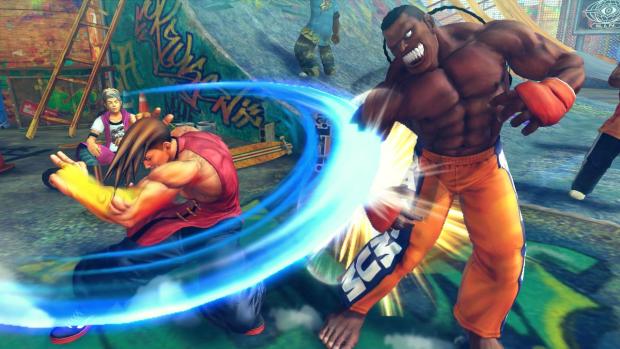
In truth, this addition feels like a realisation of the Ultra mechanic, or at least a welcome alteration to a feature that was, up until now, horribly narrow in its application. Having access to two types of Ultra creates a spontaneity to their deployment that was missing from previous iterations of Street Fighter IV, and leads to more unpredictable bouts in the process. For example: if you fought a Cammy with her counter Ultra in the past you’d be painfully cautious in the second half of a fight, but now you won’t know if she’ll use that, or if she’ll try her other Ultra, and that adds a welcome tension to the entire Ultra mechanic.
Finally: Delayed Wake-Up. In Street Fighter IV, and many fighting games for that matter, there’s a mechanic by which you can “instantly” get up after an attack, but Street Fighter IV includes many instances when this mechanic isn’t available, such as following a throw. Ultra Street Fighter IV adds a mechanic for these instances through delayed wake-up: if you’re grounded by an attack that you can’t perform an instant recovery from, then you can delay your recovery instead.
Why is this such a boon to the game? Because it forces many players, myself included, to re-wire their entire thought patterns in response to certain actions. As Chun Li I have a set follow up to a throw – I know the timing required and I know the angles I want to move at – but delayed wake-up changes this. If my opponent knows I’m a hasty attacker then they can choose to get up a tiny fraction later than normal and evade my attack completely, avoiding such dreaded things as block stun and chip damage while throwing my attack pattern through a loop.
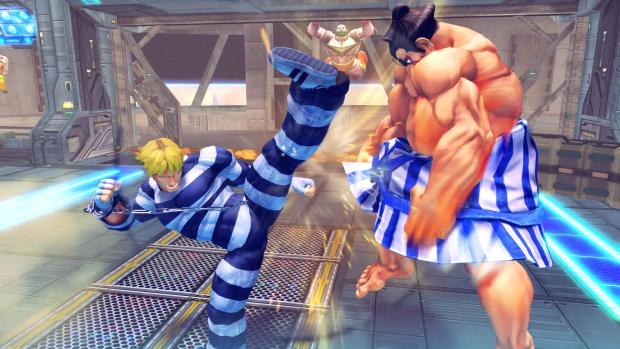
This mechanic’s effect isn’t as obvious as Red Focus or Ultra Double and will take many players a lot of time and effort to really suss out, but it’s the mechanic that will likely cause most disruptions to the “professional” scene.
These three mechanics are huge, successful changes to the way Street Fighter IV works, making Ultra Street Fighter IV a welcome and thorough restoration of Street Fighter IV’s increasingly creaky foundations. What was old is now new again, as they say.
If any complaint need be levelled at the game it’s that outside of these huge changes, fan-pleasing extras such as “edition selects” of the fighters, requested modes such as online training and online elimination scraps, and a few new arenas (made more Street Fighter following their appearances in Street Fighter X Tekken), Ultra Street Fighter IV is still an incredibly bare bones solo experience, even offering little in the way of tutorial material for the uninitiated.
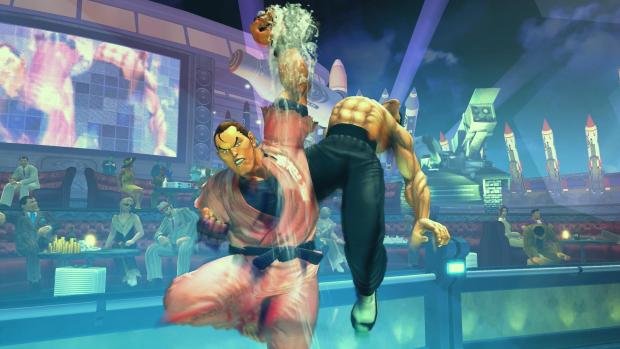
For example, those unsure of the new mechanics will need to consult an in-game electronic manual to read descriptions of them, and then work them out during combat or through training. Considering smaller budget titles such as Skull Girls, and contemporary brawlers like Killer Instinct, have some rather comprehensive teaching tools, you’d think that Ultra Street Fighter IV might throw in a few pointers.
Things get harder when you discover that Ultra also lacks combo trials for its new fighters, meaning that you’re completely on your tod when it comes to working out their quirks, too. Ultra Street Fighter IV’s attitudes can be very 1991 at times.
But in the grand scheme of things, does that really matter? Those elements would be nice, sure, but when it comes down to judging the pure balance, joy and feel of the man/lady/beast/clone-punching, Ultra Street Fighter IV is still the perfectly tuned tip-top of the genre.
VERDICT: Street Fighter IV was a superlative experience even before today, but Ultra Street Fighter IV, with its well devised additions, has added the bacon to what was already a tasty burger – you don’t know that Street Fighter IV needs these mechanics until you’ve tasted it with them. Then it chucks some new characters on top for good measure. After the disappointingly meagre Arcade Edition, Ultra is an expansion every bit deserving of its title, and more than worthy of the time of anyone that has, does, and is yet to enjoy Street Fighter. Here’s to the next five years of brave Ultra counters and delayed wake-up mix-ups.

INCREDIBLE. This is the pinnacle of our scoring spectrum, reserved for games that truly affect us, that capture our imagination so completely that they affect the standard by which we measure future games. 10/10 is not a declaration of perfection, but an assurance that the game in question is of amazingly high quality and has exceeded our expectations.
Review code provided by publisher.


